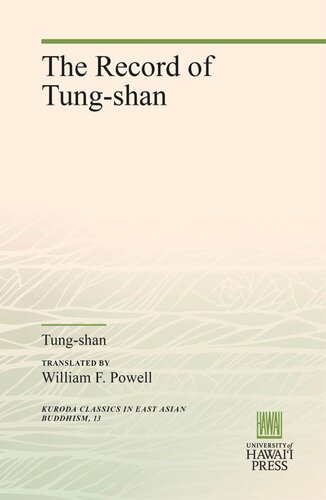

Most ebook files are in PDF format, so you can easily read them using various software such as Foxit Reader or directly on the Google Chrome browser.
Some ebook files are released by publishers in other formats such as .awz, .mobi, .epub, .fb2, etc. You may need to install specific software to read these formats on mobile/PC, such as Calibre.
Please read the tutorial at this link: https://ebookbell.com/faq
We offer FREE conversion to the popular formats you request; however, this may take some time. Therefore, right after payment, please email us, and we will try to provide the service as quickly as possible.
For some exceptional file formats or broken links (if any), please refrain from opening any disputes. Instead, email us first, and we will try to assist within a maximum of 6 hours.
EbookBell Team

4.8
44 reviewsTung-shan Lian-chien (807-869) was an active participant in what was perhaps the most creative and influential phase in the development of Ch’an Buddhism in China. He is regarded as the founder of the Ts'ao Tung lineage, one of the so-called Five Houses of Ch’an, and it was his approach to Buddhism and the house it gave rise to that attracted the interest of the great thirteenth-century Japanese monk Dogen during his stay in China. Dogen subsequently carried Tung-shan’s lineage back to Japan where it became known as Soto Zen, which remains one of the major Zen sects today.
The discourse record translated in this volume represents a unique form of religious literature. Drawn from the dialogues of ninth-century and tenth-century Ch’an masters who lived mostly in the mountains and rural areas in and around modern Kiangsu Province, the discourse records present the reader not with philosophy or doctrine but rather with word portraits of some of China's more influential Ch’an masters. They allow us to glimpse the personalities and teaching styles of figures believed to be capable of manifesting the “pure mind” in their simplest words and actions. Few early Ch’an masters appear to have committed their teachings to writing, so that the discourse records are virtually the only tangible traces that remain of these seminal figures of Ch’an history.